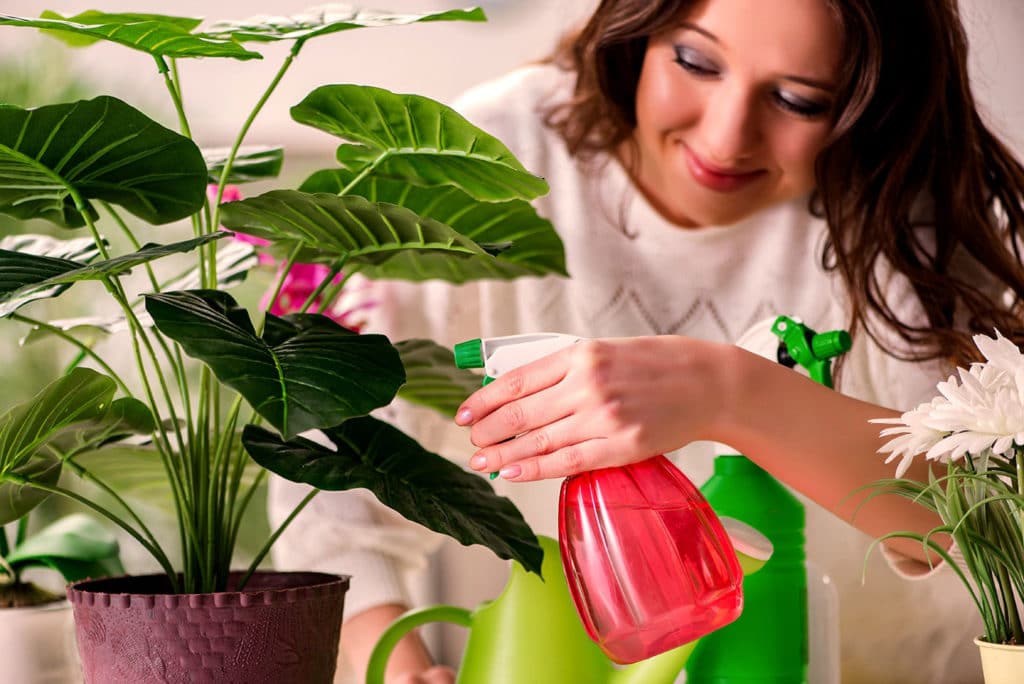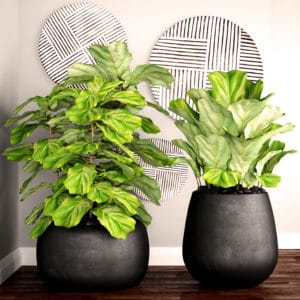3 Ways to Keep Your House Plants Healthy
House plants add a unique touch to your home and office. Many different conditions are essential to help your house plant grow and thrive – including watering, humidity, temperature, and light. Here are a few easy ways to make sure your house plant will thrive.
Specific Winter Plant Care tips:
- Provide more light. Move your plants closer to light sources and rotate them.
- Keep your plants away from cold drafts from windows or doors that open frequently, hot vents or radiators.
- Clean leaves and remove spent leaves. Dust can block sunlight and cause disease. Wipe leaves with a microfiber cloth or a slightly damp sponge or soft towel.
Water according to instructions and season because the needs of the plant will change throughout the year
Each plant has unique watering needs. While one plant may do well being soaked, others will die if their soil is always wet. It also depends on where the plant is located. Plants placed by a sunny window will need to be watered more frequently than one in a dark room. Watering once or twice a week is suitable for most plants, where you water the plant thoroughly but infrequently.
Many plants need more water when they are blooming and growing and need less in the winter. Some plants only need to be watered a few times a month in winter. As a general rule, foliage type indoor plants like to be watered well once a week or when the top 2 inches of the soil are dry; Succulents and Cacti usually only need water once a month. Blooms use more energy and water, so during times your plants are blooming they may need an additional watering. Remember, plants do not like to sit in water; no wet feet.
Plants that flower: These varieties typically like their soil to be kept moist, but not wet.
Plants with foliage: They should be watered directly on the soil, near the root balls. During the winter, allow for the top inch or two to become dry before you water again.
Water plants with tepid water. Cold water can shock the plant, similar to how cold temperatures can shock them.
One way to check to see if a plant (except cacti and succulents) has enough moisture is to place the tip of your finger about 1 inch below the top of the soil. If it’s dry at the tip of your finger, give it more water.
A few signs of under-watering and over-watering:
- Dry soil or soggy soil
- Drooping or sagging
- Lack of blooms
- Brown, crisp leaves
Find suitable lighting and air flow
It is important to get the correct lighting, temperature, and air flow to promote good overall plant health. Remember to rotate your plant ¼ turn periodically so all sides have an opportunity face the sun. Placing your plant in a warm environment, away from drafts in the winter, with good air circulation (such as a ceiling fan) will help keep your plant healthy and prevent disease.
Partial sunlight and shade: Ideal area to place your place is to be near a west or east facing window to get a few hours or sun, avoiding direct sunlight midday. Many varieties, especially flowering types, do well in this lighting.
Full shade or low light: If you have a north window or darker room, plants like Mother-in-law’s tongue, Cast Iron Plant (sansevieria) and Lucky Bamboo are able to thrive in this type of lighting.
Bright without direct sun: This type of lighting is best for many foliage and most flowering types. A south facing window will allow for direct sunlight, but it’s best to set the plant a few feet from the window. A place near an east or west facing windows also works well if the window is large enough to allow plenty of daylight.
A few signs of too much sun: drooping or shriveled, dry leaves or flowers or faded color. Some of these are also signs of under-watering, so pay attention to both your watering habits and the plant’s placement in your home or office.
Clean the leaves
Don’t let dust build up on the plant’s leaves. Routinely cleaning plants not only improves their appearance, but also can help improve photosynthesis by unblocking the plant’s pores, allowing it to breathe and prevent problems like disease and insect infestation.
Best practice is to first wipe down larger leaf plants (without hairs) with a dry cloth or soft brush to remove as much dust as possible. Next, while using one hand to support the leaf, use a damp clean soft cloth or sponge to wipe it down again.

Ferns and palms and other plants with large, thin leaves can be wiped down with a soft cloth and then lightly sprayed to remove remaining dust.
Ferns and palms and other plants with thin leaves can be wiped down with a soft cloth and then lightly sprayed to remove remaining dust.
If you have a plant with hairy leaves or spikes, like African violets, succulents, or cacti, using a small brush with soft bristles will be the gentlest way to clean your plant.
Each house plant has its own requirements to grow and thrive – and don’t forget they need to be fed! Take time to review the care instructions or speak with one of our associates for more care tips.


